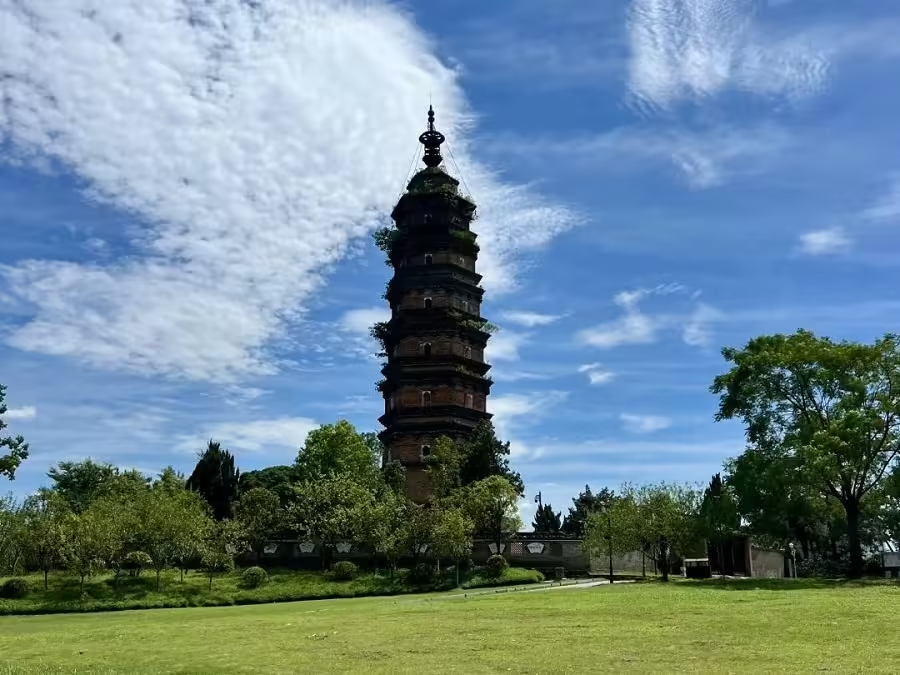Fuliang Ancient City (浮梁古城) is located on the outskirts of Jingdezhen City and was originally established in the 12th year of the Yuanhe era during the Tang Dynasty (817 AD). It has a rich history spanning the Tang, Song, Yuan, Ming, and Qing dynasties. The city’s layout resembles the Bagua (Eight Trigrams) and its walls extend over 20 li in length, standing 5 meters high and over 3 meters wide. Throughout history, Jingdezhen has been under the jurisdiction of Fuliang County. The city’s long-standing tea culture is reflected in the famous Tang Dynasty poet Bai Juyi‘s lament, “Merchants value profit more than parting, last month they bought tea in Fuliang.” Many esteemed scholars and poets, such as Yan Zhenqing, Liu Zongyuan, Wang Anshi, Su Shi, Huang Tingjian, Foyin, Fan Zhongyan, and Yang Wanli, have praised Fuliang’s scenic beauty and cultural heritage.
Table of Contents
- Basic Information
- Location and Transportation
- Highlights of Fuliang Ancient City
- Other Notable Attractions in Jingdezhen
Basic Information
| Estimated Length of Tour | 2 hours |
| Ticket Price | 40 RMB |
| Opening Hours | 8.00 – 18.00; Last admission: 17.30 |
| Telephone Number | 0086-0798-2625211 0086-0798-2620150 |
Location and Transportation
Fuliang Ancient City is situated on the outskirts of Jingdezhen, Jiangxi Province, approximately 8 kilometers from the city center. To reach the ancient city, you can take Bus Line 16, which has a branch line that operates every 70 minutes. Buses from Jingdezhen to Fuliang Ancient City run from 07:20 to 16:20. For the return journey to Jingdezhen, buses operate from 10:20 to 17:30.
Highlights of Fuliang Ancient City
Fuliang Ancient County Office

The Fuliang Ancient County Office, built during the Daoguang era of the Qing Dynasty, is one of the four remaining ancient county offices in China, dating back 170 years. It covers an area of 64,495 square meters and has preserved the original layout of the county office, including the screen wall, main gate, ceremonial gate, courtyard, main hall, second hall, and third hall. The building is oriented north-south, with a well-planned layout of corridors and interconnected structures, combining a sense of solemnity with ease, and heaviness with elegance. Inside the office, you can see exhibits of ancient official uniforms, torture devices, various weapons, interrogation staffs, sedan chairs, and handcuffs. The spacious courtyard features ancient towering trees and a 40-meter-long stone-paved pathway leading directly to the main hall. The pathway is slightly elevated compared to the surrounding ground, creating an imposing atmosphere as you pass through the ceremonial gate and step onto the pathway.
Song Dynasty Red Pagoda

Originally named the West Pagoda, the Red Pagoda was constructed in 961 AD (early Northern Song Dynasty), making it 1,040 years old. It is the oldest and most well-preserved large ancient pagoda in Jiangxi Province, often referred to as the “First Pagoda of Jiangxi.” It was renovated in 1575 AD (third year of the Wanli era of the Ming Dynasty). The construction of the pagoda took 79 years due to its reliance on donations collected by monks and the lack of tools in ancient times. It was built entirely by manual labor, with layers of soil piled up to form the structure. The pagoda’s unique design features a “pierced wall and encircling” structure. To ascend, one climbs stone steps from the exterior, exits through the opposite door, and makes a partial loop around the outer edge before reaching the top. The base of the pagoda houses a subterranean chamber where relics are enshrined.








